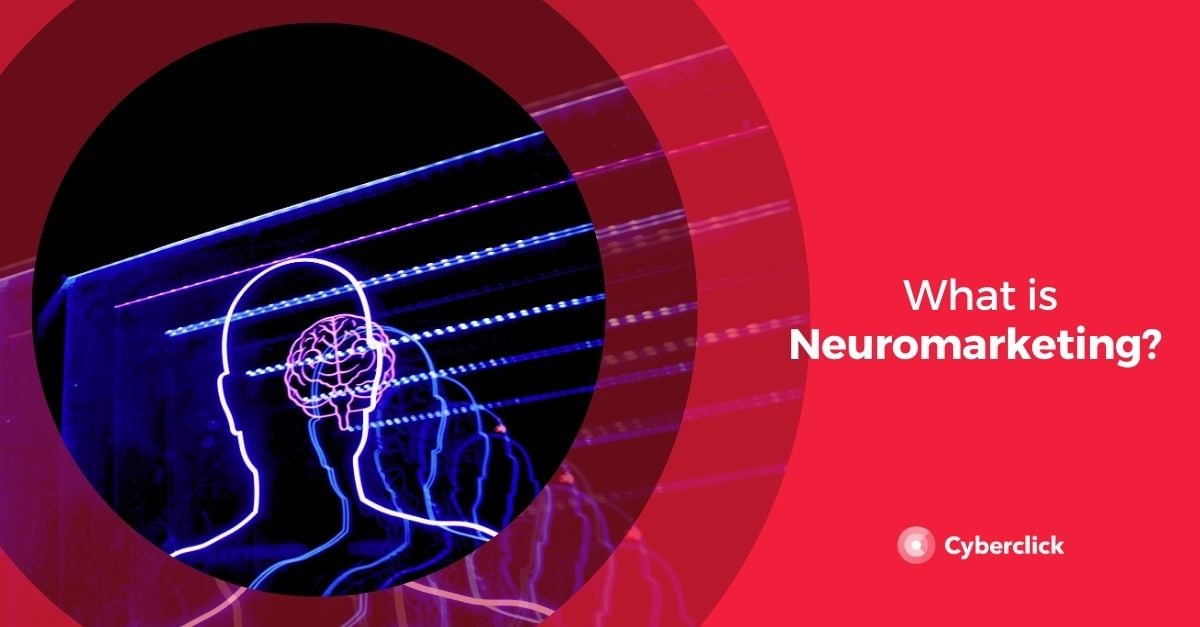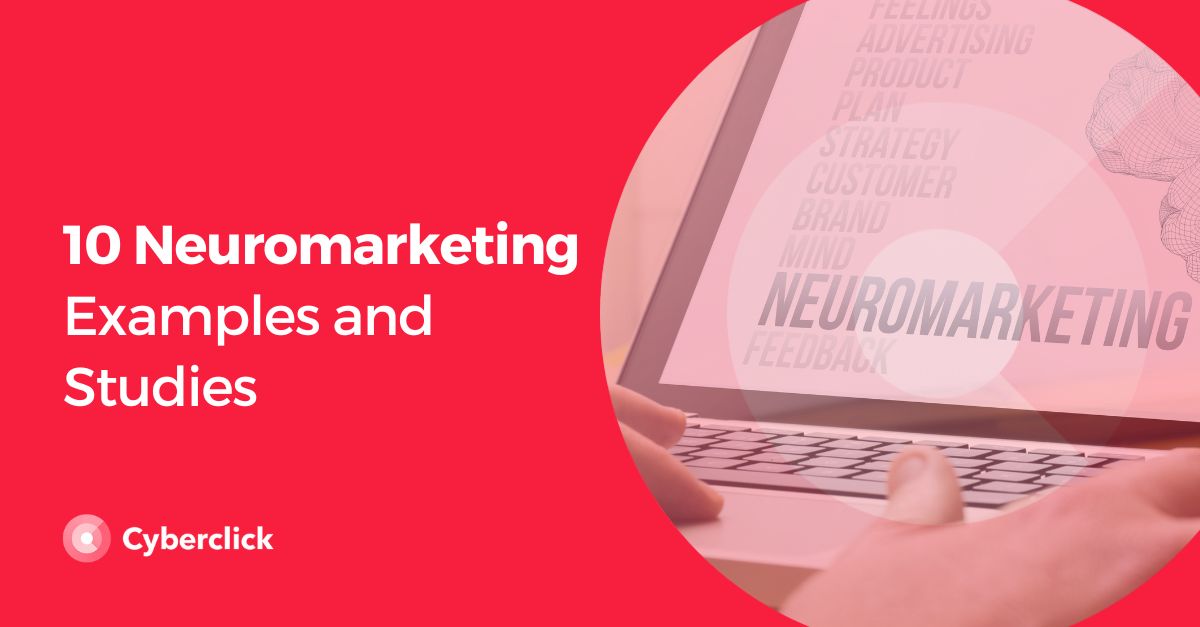Neuromarketing is the interdisciplinary practice that blends elements of marketing, psychology, and neuroscience to explore how the human brain reacts to advertising and branding messages. Scientific tools and experiments are used in a controlled setting to better understand consumer motivations and how marketing stimuli affect brain activity and buying decisions. Advertisers have always wanted to understand and predict buying decisions, and scientific techniques such as eye tracking, facial coding, sensory marketing and reading electrical activity in the brain are some of the methods covered by Neuromarketing to identify what really makes consumers tick.
Read on for more about how neuromarketing has changed how we advertise and the techniques you can implement here and now.
Somewhat controversial when it emerged in 2002, neuromarketing has gained wider acceptance as it produces objective data from the brain about decision making, as opposed to mere opinion or guesswork. In fact, in 2005 HarperCollins officially included “neuromarketing” in their dictionary.
The first research paper published on neuromarketing was based on a study performed in 2003 at Baylor College of Medicine by Read Montague, Professor of Neuroscience. Participants were asked to choose between Coca Cola or Pepsi while having their brains scanned by an fMRI machine.
Results showed that different areas of the brain light up depending on if we are aware or unaware of the brand we’re choosing. So if someone knew they were drinking Coca Cola they said they preferred it. If the brand being drunk was unknown, Pepsi was preferred. This means a brand as strong as Coca Cola can actually subconsciously rewire our decision-making due to its extraordinary history of branding. This despite the fact that Pepsi regularly wins blind taste tests.
Neuromarketing Techniques
Eye Tracking
As the name suggests, this technique uses devices to track eye movement while participants are shown advertisements. The technology gives insight into if and how consumers visually respond to marketing. Portable devices can be worn while watching television or perusing a store. Are buyers actually reading text? Does ad placement affect attention? What colors or shapes draw the most attention? Eye tracking opens up a world of possibilities for marketers to better understand what visually attracts or repels consumers.
Facial Coding
Using computer algorithms to measure facial expressions, marketers can better understand emotions created by visual stimuli. We naturally observe and take in facial expressions of the people we meet everyday and react based on the emotion presented. Facial coding technology takes this a step further by measuring subtle muscle movement in the face to decipher emotions and even what actions may follow.
EEG (Electroencephalogram) and fMRI (functional Magnetic Resonance Imaging)
By reading the electrical activity in the brain in response to stimuli, marketers can gain serious insight into what elicits desired responses in consumers. There are two primary methods used in neuromarketing:
- An EEG is a test that measures electrical activity in your brain using electrodes attached to your scalp. Brain cells communicate with each other by way of these electrical impulses. This method shows near-instant reactive brain activity but isn’t very precise on what part of the brain is activated.
- An fMRI measures brain activity based on blood flow—when a part of the brain is activated blood flows to that region. While not as effective for measuring the speed of brain activity, fMRIs can pinpoint which region of the brain is being activated.
Applied to marketing these tests of brain activity are extremely insightful in objectively measuring what excites buyers, and, what doesn’t.
Sensory Marketing
Outside of the laboratory brands are experimenting with various sensory elements to measure their impact on sales. Besides visual stimuli brands can utilize smell, sound, taste and feel to entice customers. Smell is particularly powerful at eliciting emotional response. Certain fragrances or aromas can unconsciously trigger memories of places, events and people.
In South Korea, Dunkin’ Donuts played their brand jingle and released a coffee aroma on local buses. Nearby stores saw a 16% increase in visitors and a 29% increase in sales. Or take Visa, who researched and perfected a specific sound that signified a purchase had been successful on their mobile app. 83% of customers said the sound or animation cues positively impacted their perception of Visa.
Humans are multi-sensory and employing sensory marketing just, well, makes sense. Yet only focusing on visual stimuli is a mistake many marketers still make. Wherever possible, try and engage with buyers’ on multiple levels of sensory input be it smell, taste, touch or sound.
Understanding Consumer Decisions
Truly getting to the bottom of consumer decisions was traditionally more of an art form than a science; understanding reasons for why and what people bought could be inferred but we didn't have the scientific data to back it up. Neuromarketing applications have changed that. We can now know exactly what stimuli lights up certain regions of the brain and what attracts the eyes of buyers. We know what facial expressions can mean in response to ads. Based on tests, predictions can be made about the possible success or virality of campaigns.
Buying decisions are both emotionally and cognitively driven, meaning they are complex processes that even we, as buyers, don’t fully understand the reasoning behind. With the use of creative and innovative neuromarketing techniques, marketers can now more effectively meet and even exceed customer expectations.
Neuromarketing, much like our analysis of big data, has opened up new avenues of understanding buying behavior. By applying neuroscience to the advertising world brands can now pinpoint responses and tweak their message for the best results. This exciting field is developing fast and can give serious competitive advantage to businesses who get it right. Consider making use of neuromarketing in your next campaign, whether with more advanced technologies or by simply adding more sensory elements.
CEO y cofundador de Cyberclick. Cuenta con más de 25 años de experiencia en el mundo online. Es ingeniero y cursó un programa de Entrepreneurship en MIT, Massachusetts Institute of Technology. En 2012 fue nombrado uno de los 20 emprendedores más influyentes en España, menores de 40 años, según la Global Entrepreneurship Week 2012 e IESE. Autor de "La empresa más feliz del mundo" y "Diario de un Millennial".
CEO and co-founder of Cyberclick. David Tomas has more than 25 years of experience in the online world. He is an engineer and completed an Entrepreneurship program at MIT, Massachusetts Institute of Technology. In 2012 he was named one of the 20 most influential entrepreneurs in Spain, under the age of 40, according to Global Entrepreneurship Week 2012 and IESE. Author of "The Happiest Company in the World" and "Diary of a Millennial".





.jpg)

Leave your comment and join the conversation